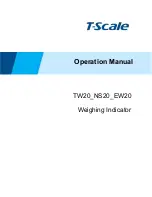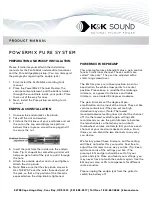
Command reference
R&S
®
ZNL/ZNLE
641
User Manual 1178.5966.02 ─ 19
Serial poll
In a serial poll, the controller queries the STatus Bytes of the devices in the bus system
one after another. The query is made via interface messages, so it is faster than a poll
using
*STB?
.
The serial poll method is defined in IEEE 488.1 and used to be the only standard pos-
sibility for different instruments to poll the status byte. The method also works for
instruments which do not adhere to SCPI or IEEE 488.2.
The serial poll is used to obtain a fast overview of the state of several instruments con-
nected to the controller.
Parallel poll
In a parallel poll, up to eight instruments are simultaneously requested by the controller
with a single command to transmit 1 bit of information each on the data lines, i.e., to
set the data line allocated to each instrument to a logical "0" or "1".
In addition to the SRE register, which determines the conditions under which an SRQ
is generated, there is a Parallel Poll Enable (PPE) register. This register is ANDed with
the STB bit by bit, considering bit 6 as well. The results are ORed, the result is possibly
inverted and then sent as a response to the parallel poll of the controller. The result
can also be queried without parallel poll with the command
*IST?
.
The parallel poll method is used to find out quickly which one of the instruments con-
nected to the controller has sent a service request. To this effect, SRE and PPE must
be set to the same value.
Query of an instrument status
Each part of any status register can be read using queries. There are two types of
commands:
●
The common commands
*ESR?, *IDN?, *IST?, *STB?
query the higher-level
registers.
●
The commands of the STATus system query the SCPI registers (e.g.
STATus:OPERation...
)
All queries return a decimal number which represents the bit pattern of the status regis-
ter. This number is evaluated by the controller program.
Queries are usually used after an SRQ to obtain more detailed information on its
cause.
Decimal representation of a bit pattern
The STB and ESR registers contain 8 bits, the SCPI registers 16 bits. The contents of
a status register is keyed and transferred as a single decimal number. To make this
possible, each bit is assigned a weighted value. The decimal number is calculated as
the sum of the weighted values of all bits in the register that are set to 1.
Bits
0
1
2
3
4
5
6
7
...
Weight
1
2
4
8
16
32
64
128
...
VNA remote control basics
















































